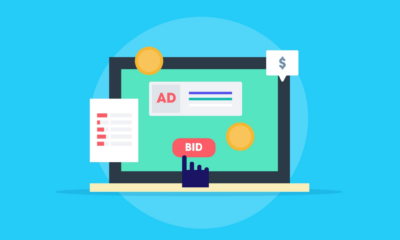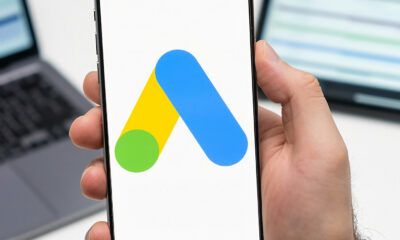When you think of young adults, do you picture a crowd of Millennials whiplashing between FOMO and YOLO? Then it’s time to update that mental image! Today’s young adults are members of Gen Z – the generation coming up behind Millennials. And, as such, they have a different set of behaviors, attitudes and expectations for brands than the YOLO crowd did. Digital marketers must revise their assumptions around today’s young adults if they hope to successfully acquire and retain this important cohort of customers.
Today’s Gen Z young adults differ from Millennials at the same age in three key ways: Gen Z is more diverse; Gen Z’s social media time and attention is distributed across different and more platforms; and Gen Z expects a lot more from brands.
Gen Z is more diverse
It is well known that the U.S. is becoming more racially and ethnically diverse. What is less well understood is how much more diverse Gen Z young adults are compared to Millennial young adults (see below). Gen Z is more diverse in three ways:
- First and most obviously, they are less likely to identify as white. Only a plurality, and not a majority, of Gen Z do so.
- Fifteen percent of Gen Z – nearly twice as many as older generations – use more than one racial or ethnic category to describe themselves. So, at the individual level, they are more likely to embody diversity than previous generations of young people.
- Gen Z young adults are more gender-diverse than previous generations. And they are more likely to embrace gender fluidity in their peers. According to Pew Research, more than half of 18-29 year-olds know someone who is transgender (versus only 44 percent of 30 to 49 year-olds). And 56 percent of 18-29 year-olds say that whether someone is a man or a woman can be different from sex assigned at birth (versus only 32 percent of 30 to 49 year-olds).
Diversity Breakout of U.S. Consumers: Gen Z vs. Millennials
What this means for digital marketers: Diverse and inclusive imagery and themes are important ways to demonstrate your brand’s core values to a wide audience. But they are even more critical as tools for resonating specifically with today’s young adults who are much more likely to see themselves in such representation.
Gen Z’s attention is distributed across different and more platforms
A decade ago, when Millennials were young adults, 57 percent of 18 to 29 year-olds had accounts on more than one social media network, according to Pew Research. Today, 96% of Millennials are on more than one platform, according to recent Gartner research. That same Gartner study found that most of today’s 18- to 29-year-olds are on five or more platforms. In contrast, most of today’s 30- to 49-year-olds are on four or fewer platforms.
Facebook was and still is the top social network for Millennials, according to Gartner surveys, but it’s a third-tier platform for Gen Z, garnering about as much participation as Snapchat and TikTok, but nowhere near their participation on YouTube.
Not only are Gen Z social media patterns different, but they also interact with brands on social differently. Gen Z users on mainstream social platforms are about as likely as Millennial users to follow brands. But Gen Z users are less likely than Millennials users to say they like seeing branded content on those platforms.
That’s not a surprise when it comes to Facebook, famously seen as “uncool” by young people. But that’s also true for Gen Z users on Instagram and YouTube. In fact, it’s only on newer platforms like TikTok, which forces brands to become fluent in platform-specific functionality, where Gen Z outpaces Millennials in following brands and liking seeing branded content.

What this means for digital marketers: Connecting with Gen Z young adults online requires a multi-platform strategy that incorporates not just platform-specific functionality but also platform-specific tone and themes.
Gen Z expects a lot more from brands
Specifically, Gen Z is more likely than older groups to want brands to take stands and talk about issues. And they are more willing to put their money where their ideals are. According to Gartner research, today’s young adults are about as likely as older consumers to think brands engage in activism to sell their products and services. Nonetheless, Gen Z wants brands to do so anyway. And they are more likely than older consumers to want brands to be a part of solving key societal issues today.
Today’s Young Adults are Savvy Conscious Consumers

When it comes to brand activism, Gen Z believes in positive reinforcement. Gartner found that, while US consumers as a whole are about as likely to “buycott” (spend with a brand to support its activism) as they are to boycott (stop spending with a brand to protest its activism). Gen Z is more likely to “buycott” than they are to “boycott.” Nearly a quarter of Gen Z reported buycotting (versus a fifth of all U.S. consumers). But only 15% of Gen Z said they’d boycotted, versus 19% of all U.S. consumers.
What this means for digital marketers: Social media content should focus on the issues and ideals that matter most to Gen Z. Your brand’s social activism story is a powerful way to engage them.
Though Gen Z young adults are unique in many ways, they are still young adults. The life stage, whenever it is experienced, is marked by milestones and firsts – first job, first apartment, first serious romantic partner. Like their age peers 10, 20 or even 30 years ago, Gen Z young adults are making the transition into independence from having been under the care (and control) of parents and other adults. But they are not yet responsible for people other than themselves (i.e. they’re not yet parents). On these experiences, Gen Z is not unique.
Yet the cultural, societal and technological conditions of today are significantly different than those of even a few years ago. That means digital marketers will have to update their assumptions about young adults if they hope to stay relevant.
Get the daily newsletter digital marketers rely on.





















You must be logged in to post a comment Login